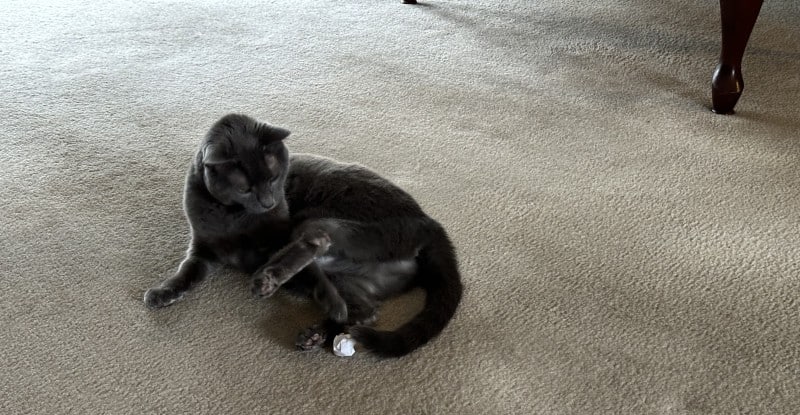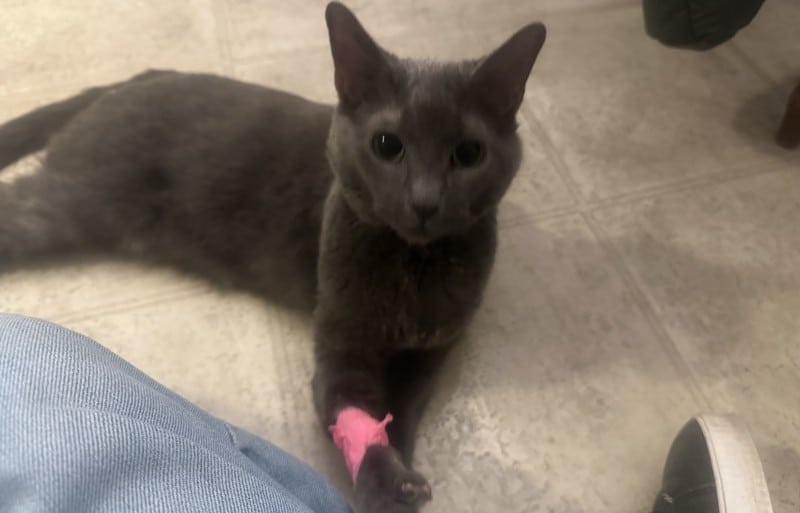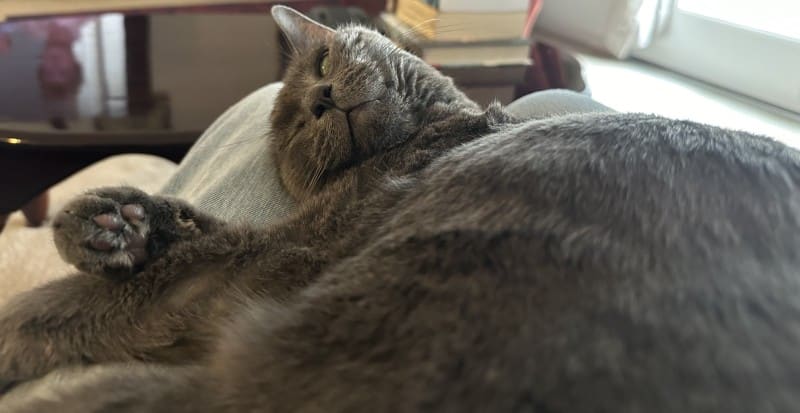- January 23, 2024
Dental Procedures for Cats: How Olga Recovered From Surgery

Hi, I’m Christopher! Read my introduction to learn more about me and my silly Russian Blue cat, Olga.
Dental issues are common in cats, but I was relieved when my veterinarian said Olga’s teeth weren’t covered with plaque and tarter. However, after a brief examination, she discovered a broken tooth and another one with an abscess. I scheduled a dental cleaning, and the veterinarian mentioned that Olga might need one or more teeth extracted. Olga hasn’t been under anesthesia since she was spayed, and I was worried about her being put to sleep for so long for surgery, but my friends reassured me that she would be fine.
After Olga was revived after the operation, my vet sent me a message that she was doing great and was an excellent patient. I was happy to hear the good news but surprised she cooperated with the veterinary team. When I try to give her medication, she resists and sometimes draws blood when she slashes me with her claws.
Recovering From Dental Procedures
On the way home from the vet’s office, Olga didn’t make a sound, but she turned into a loudmouth when she returned to her territory. The medication made her pupils dilate, and she looked like a “demon cat” for several hours. She cried when I left the room and wouldn’t leave my side for the rest of the evening.
The medication made her hyper, and she had trouble sitting still. When she jumped in my lap, she couldn’t relax; she kept wriggling around and resembled a fish out of the water. She eventually calmed down, but I had difficulty administering the antibiotic the following day.

Medications for Dental Surgery
Amoxicillin is a standard antibiotic for humans and animals, and I had to give her two doses for 5 days. Olga hated it and didn’t enjoy having the liquid shot into her mouth with a syringe. Although the type of amoxicillin may vary depending on your vet, the liquid I was prescribed looked like Pepto Bismol. It was thick and pink and stained my counter and carpet.
One morning, Olga ran into the living room after I gave her the antibiotic. She dribbled the liquid on the carpet in several spots, and I had to scrub the stains several times with a high-end carpet cleaner to remove them. I’ve removed cat vomit, candle wax, and red wine from my carpet before, but the amoxicillin stains were more stubborn and challenging to remove.

Recovery Time
Olga was more affectionate when recovering from the procedure, but all cats react differently to surgery. Several years ago, my Siamese cat didn’t want to be touched while recovering from neuter surgery, and I don’t blame him. Unlike him, Olga needed more reassurance that everything would be okay.
She slept on my lap instead of disappearing for a few hours of “alone time.” She yowled when I went outside to work in the yard and hit me on the leg when she saw me walking toward the garage. It took Olga less than a week to return to normal, and although I miss the extra attention and hearing her talk more, I’m glad the procedure and recovery process weren’t as frightening as I anticipated.
Tags
What do you think?
Related Articles

New Puppy Checklist: Gear You’ll Need for Your New Dog
Getting a new puppy is really exciting, but before you welcome them home, it’s important to prepare your space for them. Since puppies need a

How Big Do Mini Poodles Get? Vet Reviewed Average Weight & Growth Chart – Dogster
The information is current and up-to-date in accordance with the latest veterinarian research. Learn more » When you buy a Miniature Poodle, you might not

Can Police Dogs Smell Nicotine? Vet Verified Facts & Info – Dogster
The information is current and up-to-date in accordance with the latest veterinarian research. Learn more » While cigarette sales have been declining steadily for decades,

How Old Is 5 in Dog Years? Vet-Approved Guide to Each Size of Dog – Dogster
The information is current and up-to-date in accordance with the latest veterinarian research. Learn more » A common method for calculating a dog’s age is

